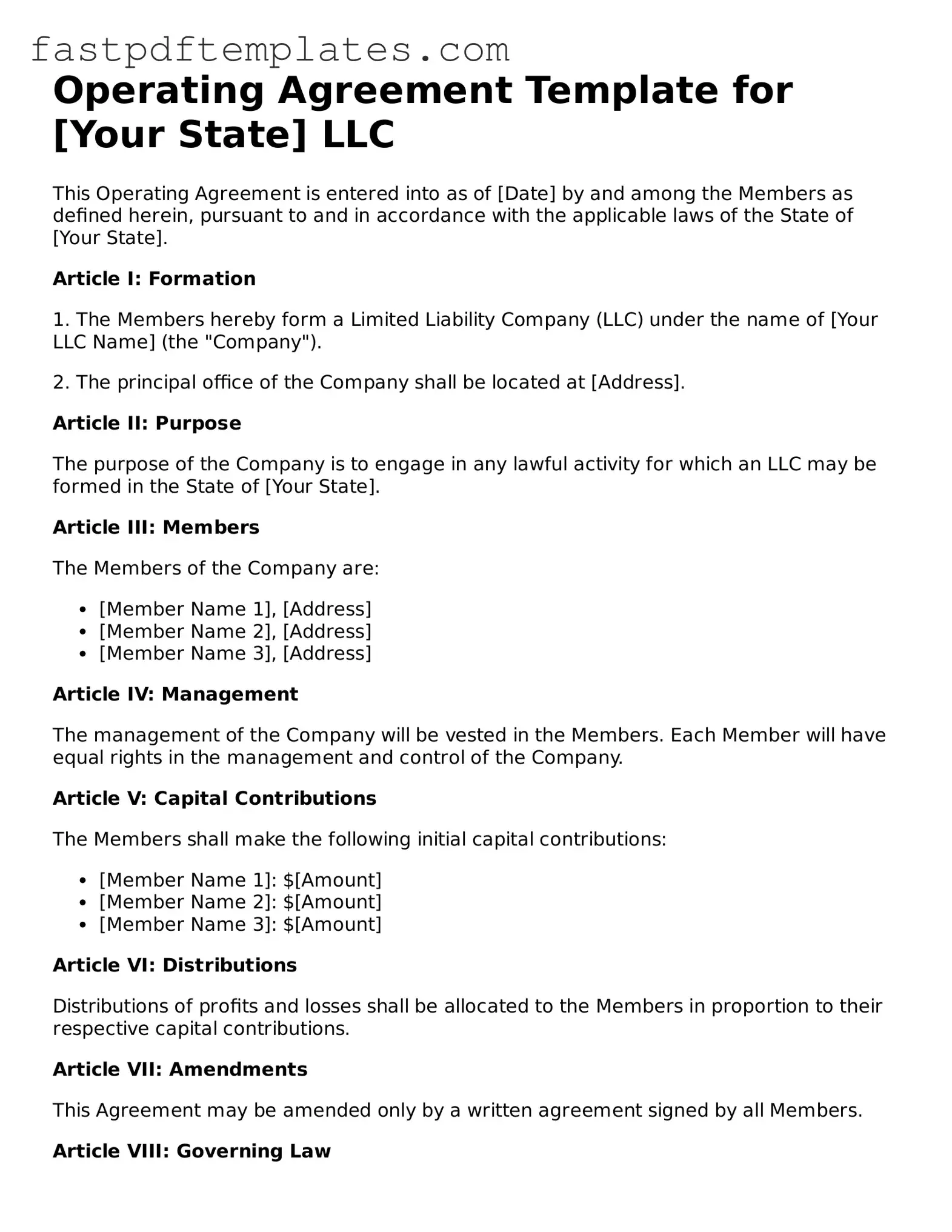Operating Agreement Template for [Your State] LLC
This Operating Agreement is entered into as of [Date] by and among the Members as defined herein, pursuant to and in accordance with the applicable laws of the State of [Your State].
Article I: Formation
1. The Members hereby form a Limited Liability Company (LLC) under the name of [Your LLC Name] (the "Company").
2. The principal office of the Company shall be located at [Address].
Article II: Purpose
The purpose of the Company is to engage in any lawful activity for which an LLC may be formed in the State of [Your State].
Article III: Members
The Members of the Company are:
- [Member Name 1], [Address]
- [Member Name 2], [Address]
- [Member Name 3], [Address]
Article IV: Management
The management of the Company will be vested in the Members. Each Member will have equal rights in the management and control of the Company.
Article V: Capital Contributions
The Members shall make the following initial capital contributions:
- [Member Name 1]: $[Amount]
- [Member Name 2]: $[Amount]
- [Member Name 3]: $[Amount]
Article VI: Distributions
Distributions of profits and losses shall be allocated to the Members in proportion to their respective capital contributions.
Article VII: Amendments
This Agreement may be amended only by a written agreement signed by all Members.
Article VIII: Governing Law
This Agreement shall be governed by and construed in accordance with the laws of the State of [Your State].
Article IX: Miscellaneous
This Agreement constitutes the entire agreement among the Members and supersedes all prior agreements and understandings.
IN WITNESS WHEREOF, the Members have executed this Operating Agreement as of the date first above written.
___________________________
[Member Name 1]
___________________________
[Member Name 2]
___________________________
[Member Name 3]
